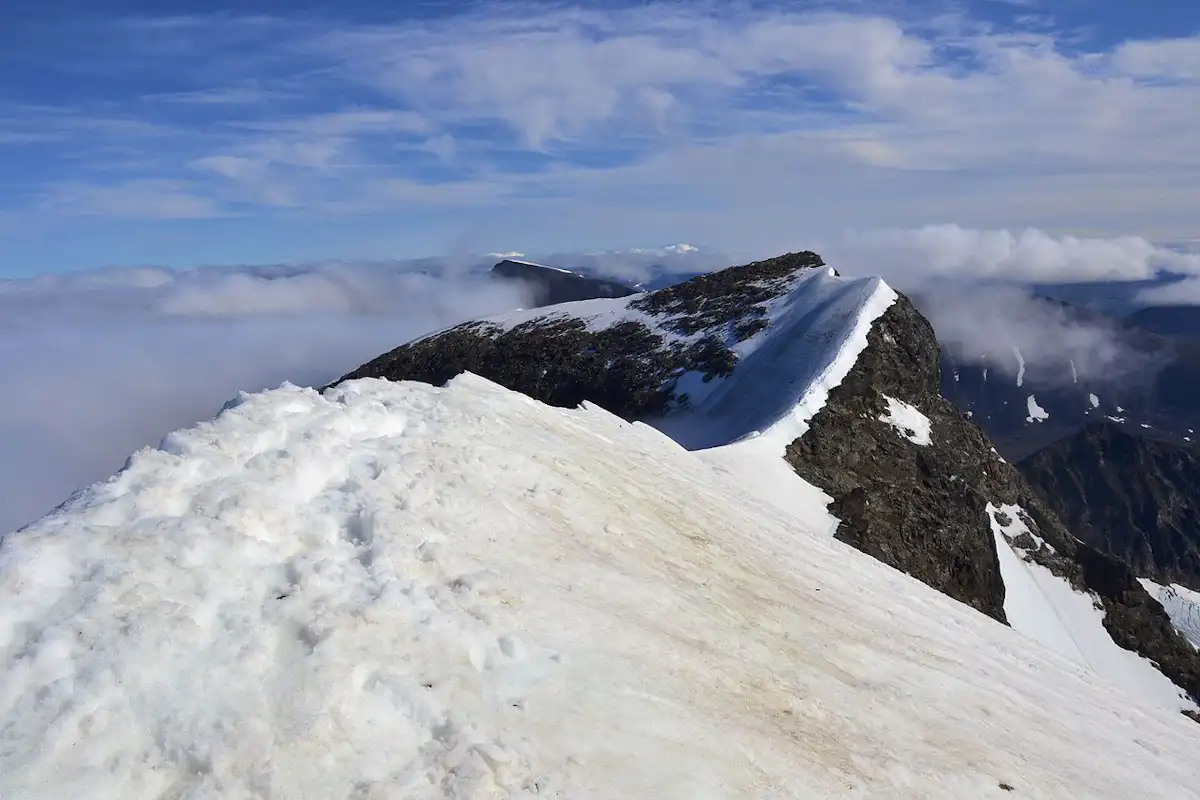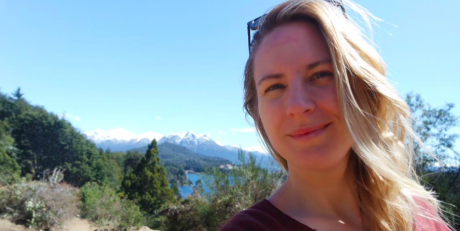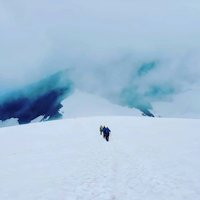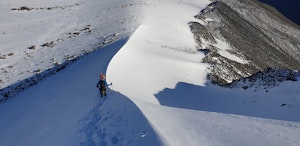Tucked away in the Scandinavian Mountains in northern Sweden, you’ll find Mount Kebnekaise. At 2,106 meters high, it’s the tallest mountain in the entire country and a great place for some mountain climbing.
The remote mountainous scenery that you get to enjoy on your way to the summit is stunning. Plus, reaching the summit is not overly difficult and doesn’t require any previous climbing experience. Home to many glaciers and stunning arctic landscapes, climbing Kebnekaise is an experience to remember.
There are however a few important things to take into consideration before you get started. We spoke to Maria Granberg, an experienced adventure athlete in the area, to get all the information you need prior to embarking on this ascent. She’s super passionate about what she does and together with her colleague, fellow IFMGA-certified guide, Martin Lundberg, she regularly guides four-day hiking programs to Kebnekaise.
“We truly love bringing people to this mountain and letting them experience the glaciers, the scenery and an immensely beautiful part of this country that not many people get to see.”
Be sure to keep reading for her Kebnekaise insider tips.
1. Starting Point: Where to go to climb Kebnekaise?
You’ll need to get to the Kebnekaise Fjällstation (the mountain station). This is a fully equipped lodge that you can use as your base while you climb Kebnekaise. It is also the start point for your ascent.
There is no road that takes you directly to the station so you’ll have to hike from the town of Nikkaluokta which is just 19 km from the mountain station. There is a well-marked trail to help you along your way, and in the summertime, you can also take a ferry which cuts down the hike by 6 km.
You can reach Nikkaluokta by bus from Kiruna in northern Sweden which has an airport and train station which connects you to Stockholm and other cities.
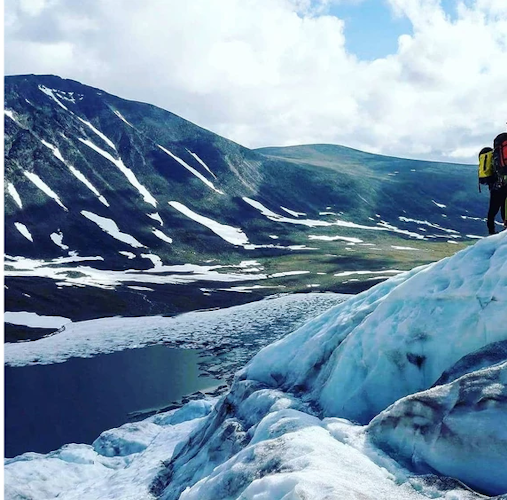 Hiking Kebnekaise
Hiking Kebnekaise
Take in spectacular views of glacial scenery. Photo courtesy of Martin Lundberg
2. What are the main climbing routes to Kebnekaise?
There are two main routes to the summit of Kebnekaise, the Østra and Vastra leden (the east and west Route.) The eastern route is a bit more interesting as it incorporates hiking, scrambling, snow sliding and some climbing using a secured via ferrata system. You even get to cross a glacier. There are also some exposed areas on the final stretch to the top.
“It has a really nice variety to it and some spectacular scenic views!”
It’s definitely the more difficult of the two routes, so if you chose the eastern route you must go with a guide.
The western route is more of a straight-up hike and can be ascended without the help of a guide. You still get to enjoy the expansive views of the land around you too.
Kebnekaise actually also has two summits. The southern summit, which has the east and west route, was actually the taller of the two summits. Due to global warming, the two summits sit at around the same altitude. If you base yourself at the station across multiple days, you’ll have time to climb both summits.
Maria and Martin’s experience even involves some preparatory rock climbing at a rock called Kaipak, close to the mountain.
“We usually spend our activity day there, teaching our clients the basics of rock climbing and how to move better technically through this kind of terrain. It’s a really fun day and our clients have a great time trying out the sport!”
3. How hard is it to climb Kebnekaise?
Maria believes that this is a challenging climb but pretty accessible for most people. It’s not a technically hard climb and the climbing involved is very straight forward. You do need to be fit though, it will take you around 9 to 12 hours to reach the summit so you need to have the endurance to hike for this length of time (with some well-timed rests of course.)
 Hiking Kebnekaise
Hiking Kebnekaise
Experience true arctic conditions. Photo courtesy of Martin Lundberg
There are parts that are steep and require climbing a via ferrata. To take this on, you’ll need to be in pretty good physical condition.
“A good indicator to feel if you’re ready is to walk approximately 20 km in five hours with a 4-6 kg backpack.”
4. When is the best time to climb Kebnekaise?
June is definitely the best month to visit. There is still some snow, which makes both the ascent and the descent easier. There are also fewer people in June, so you don’t have to fight through hoards of crowds.
An important factor to take into consideration is the weather. It’s pretty changeable, for that reason it’s good to go for a guided trip like Maria and Martin’s that lasts four days. That way you have some wriggle room if your time there is struck by bad weather.
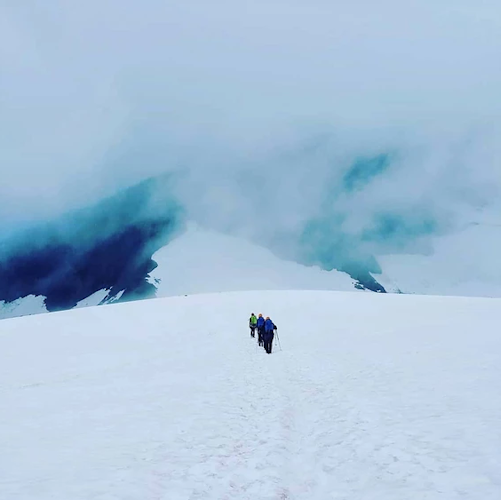 Hiking Kebnekaise
Hiking Kebnekaise
The weather can sometimes be unpredictable. Photo courtesy of Martin Lundberg
5. What equipment do you need to climb Kebnekaise?
Having the right equipment is key for a successful climb. Even though the climb is accessible, that doesn’t mean it should be taken lightly. Using the proper equipment makes for a safer climb.
Hiking boots are non-negotiable for this climb, however, you can often rent these, along with hiking poles, at the mountain station. You’ll also need a backpack and weather appropriate clothing like warm and waterproof layers. Your guide will be able to provide you with the more technical gear like a helmet, carabiners, slings, and crampons. Maria and Martin also send out an ‘equipment list’ to all of their clients prior to the trip so that they know exactly what to bring.
